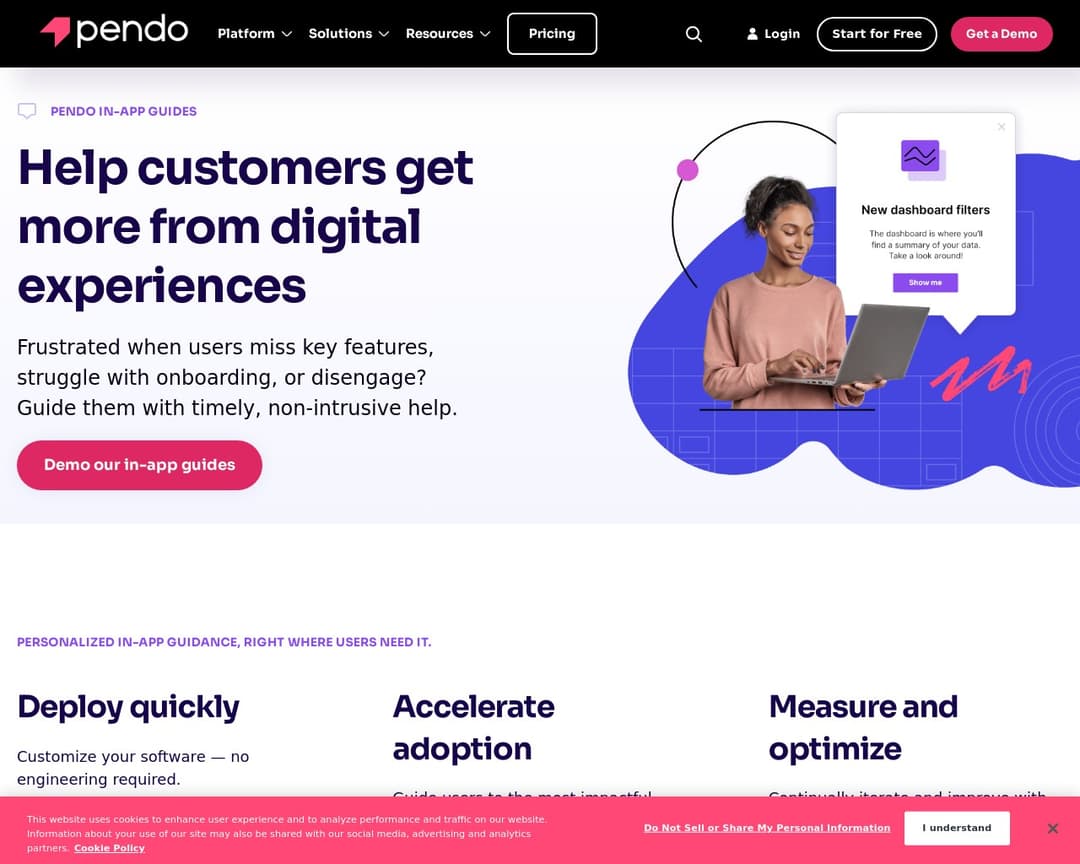Competitors
12
🚀
Discover 50+ More Competitors
This is just the tip of the iceberg. Unlock comprehensive insights into your competitive landscape.
Unlock Full ReportPendo is a Software Experience Management (SXM) platform that helps organizations understand and improve their software products and digital experiences. It provides tools for product analytics, in-app guidance, user feedback collection, and AI-powered insights to drive user adoption, enhance engagement, and optimize product development and IT operations.
3 of 4
Workflow Observation
Pattern Analysis
Actionable Suggestions
Task Automation
8 of 10
Contextual Inline Help
Integration APIs
Team Collaboration
Onboarding Accelerator
Analytics Dashboard
Knowledge Sharing
Privacy Controls
Non-Intrusive UI
Macro Recording
Smart Templates Library
Pendo offers a Software Experience Management (SXM) platform that includes in-app guides, analytics, and AI-powered insights. While it focuses heavily on product adoption, user onboarding, and improving software experiences for both customers and employees, it does not explicitly offer 'task automation' or 'macro recording' in the sense of automating repetitive desktop tasks across applications. Its 'guides' are more about providing contextual help and walkthroughs rather than automating user actions. However, it does observe user behavior (workflow observation), analyzes patterns through its analytics and AI features, provides actionable suggestions (through guides and insights), offers contextual inline help, integrates with other tools, supports team collaboration, accelerates onboarding, provides analytics, and emphasizes non-intrusive UI and privacy controls. The core difference is the lack of direct task automation and macro recording for general desktop workflows, which are central to 'Second Cursor'.

I've been using Alternative A for 6 months now and it's been fantastic. The pricing is much better and the features are actually more robust than what [Product] offers.
It handles edge cases much better and the API is actually documented properly.
Check it out at our site.
Honestly, after trying both, Competitor B wins hands down. Better customer support, cleaner interface, and they don't nickel and dime you for every feature.